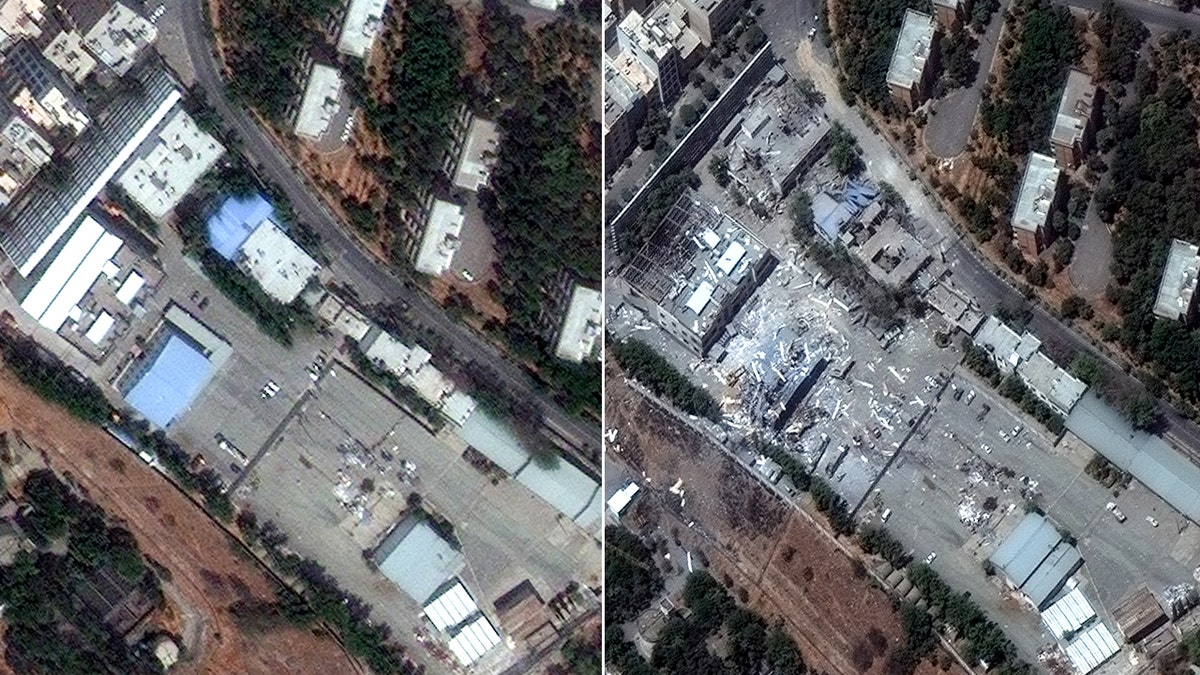
Source: foxnews.com
Image content: The image shows two side-by-side satellite views of the same industrial or warehouse complex. The left panel appears intact with multiple buildings and roads, while the right panel shows extensive destruction and debris, indicating the site after a major explosion or strike.
Summary
Across multiple reports, U.S. airstrikes on Iranian nuclear facilities caused significant visible damage and temporarily disrupted Tehran’s nuclear program, but intelligence assessments indicate the setback is measured in months rather than years. While satellite imagery shows cratered entrances and damaged infrastructure at Fordow, Natanz, and Isfahan, much of the underground enrichment capability appears intact. A U.S. intelligence summary assessed Iran could assemble a nuclear device within 3 to 8 months if it chose to, though there is no indication of a current decision to build a weapon. These findings contradict claims that the strikes “obliterated” Iran’s program, underscoring the limits of single-strike operations to deliver a decisive, long-term rollback.
Key Points
- Intelligence indicates Iran could build a device in 3–8 months if it chose to, but no decision to do so is detected.
- US strikes caused severe surface damage and sealed entrances at key sites, but core enrichment infrastructure remains largely intact.
- Defense assessments conclude the strikes set back Iran’s nuclear program by months, not decades.
- Satellite imagery corroborates widespread damage at Fordow, Natanz, and Isfahan following B-2 strikes.
- Official claims of a decisive, long-term rollback are contradicted by “low-confidence” and DIA assessments.